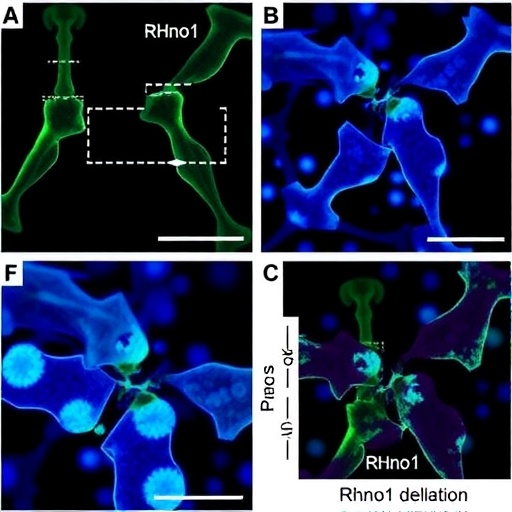Within the framework of the European research project HIPATIA
![]()
Credit: Credits: SENER Aeroespacial.
The HPT is a new electric space propulsion technology that can provide a competitive alternative to the thrusters currently in use and one that awakens the interest of diverse companies and institutions. SENER Aeroespacial and the UC3M have already developed a HPT prototype, the first ignition of which was carried out in the Electric Propulsion Laboratory of the European Space Agency (ESA) in late 2015. Since then, various evolutions have been carried out on the first prototype design that have been tested in the University’s facilities. The latest design update will be captured in a new engineering model that is in development.
Now, the European Union has granted a project to a consortium led by SENER Aeroespacial which will continue the development of the HPT in the framework of the European Union Research and Innovation Programme, Horizon 2020 (GA870542). It is the project HIPATIA (HelIcon PlasmA Thruster for In-Space Applications), in which the Spanish scientific team SENER Aeroespacial-UC3M is going to collaborate with Airbus, the National Centre of Scientific Research, both in France, and the company Advanced Space Technologies in Germany. This consortium began its activity on the 1st of January 2020 and will work jointly for the next 30 months to test the functioning of the new prototype for its use in small space platforms, aiming to fit the needs of the market. As a first activity, representatives of all the organisations involved in the project met for the first time in the SENER Aeroespacial premises in Tres Cantos (Madrid) and in the UC3M on the 28th and 29th of January.
A thruster for small satellites
In the words of Mercedes Ruiz Haro, Coordinator of the HIPATIA project and Project Manager in the Flight and Avionics Systems Division at SENER Aerospace: “HIPATIA is a step further towards the development of HPT technology for commercial uses. At the end of this project, financed by the European Union, we will have a completely validated propulsion system ready for the first demonstration of its potential in orbit”.
“Bearing in mind the relatively simple and resistant design of the HPT technology, the HIPATIA project has the potential to offer an affordable thruster solution for small satellites that weigh less than half a tonne and require less than 750 watts of electric propulsion power”, explains Pablo Fajardo of the Plasmas and Space Propulsion Team (EP2) from the UC3M’s Bioengineering and Aerospace Engineering Department.
This model could be used in future constellations of non-geostationary satellites, a new idea that is in the development process and entails important initiatives. For example, to deploy groups of satellites located in different orbital planes at an altitude of 1,200 km to provide internet broadband with global coverage, which includes all people living in areas where these types of connections are not currently available.
Functioning of the HPT thruster
The HPT thruster is comprised of an antenna that emits radiofrequency waves within a cylindrical chamber where hot plasma is generated, and a magnetic nozzle that supersonically accelerates said plasma. It is a device without grids, electrodes or solid nozzles, which provides big advantages in terms of operating simplicity and extension of useful life.
Being an electric propulsion device, the helicon plasma thruster uses less propellant than a chemical rocket engine, which allows for a reduction in satellite launch costs and, for the same price, increases their effective load capacity. At the same time, this is expected to present a higher thrust capacity per unit of power than other electric propulsion systems, such as Gridded Ion Engines and Hall Effect Thrusters, reducing spacecraft maneuvering times.
In the framework of the HIPATIA project, the HPT prototype that is going to be tested is optimised for its application in a medium power range of 400-600 watts. This technology “could be of value for different types of satellites or for interplanetary journeys”, points out Pablo Fajardo. In the future, versions of higher power HPT could be used for manned missions to Mars or freight vehicles between Earth and the Moon, as well as possible space debris disposal programmes or refuelling in space.
In the framework of this project, scientists and technologists will face challenges related to the integration of a complete electric propulsion system, formed of a thruster unit, another for radiofrequency and power generation and control, and a unit for propellant flow management.
###
Media Contact
Javier Alonso
[email protected]
Original Source
https:/




